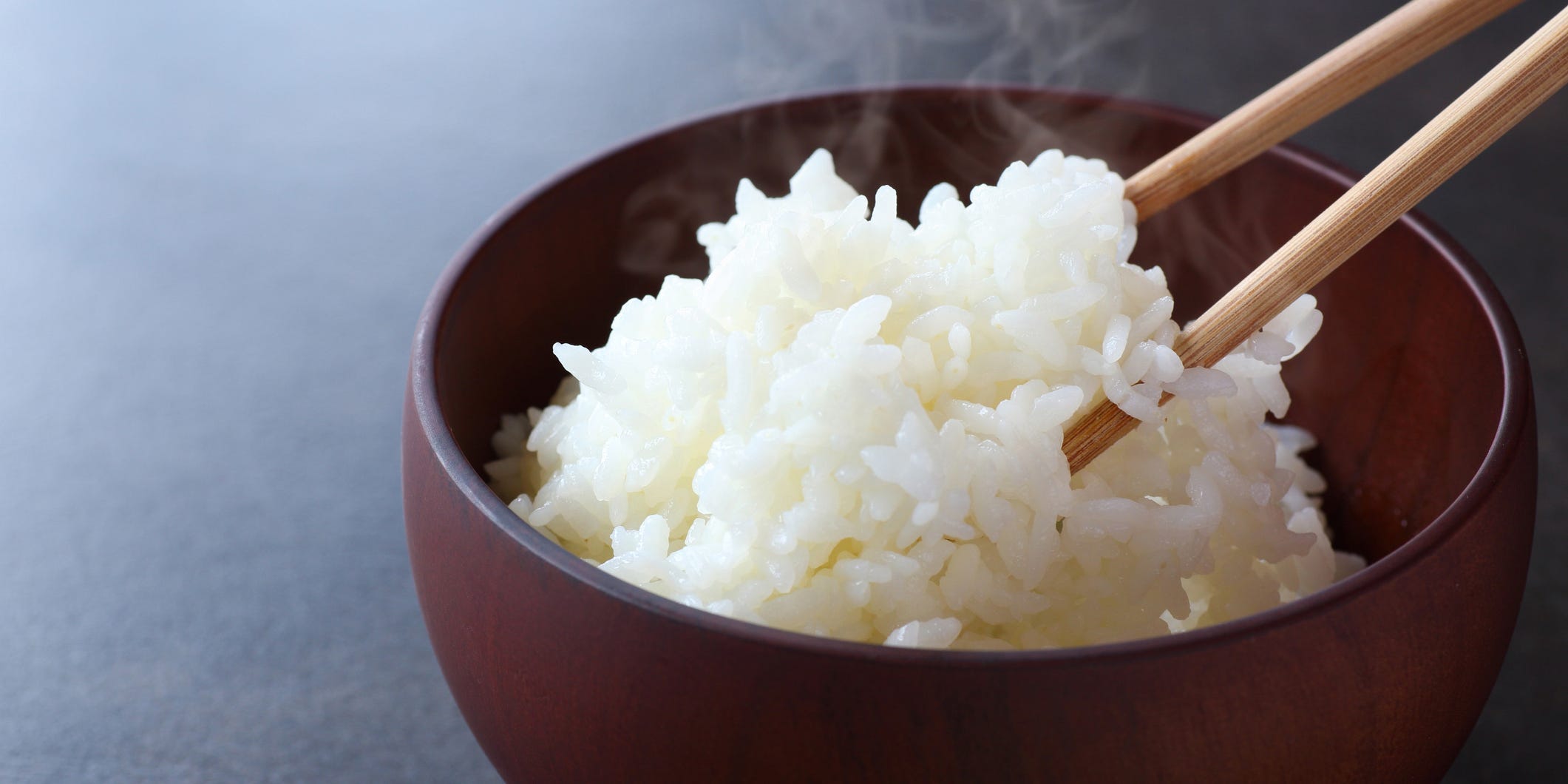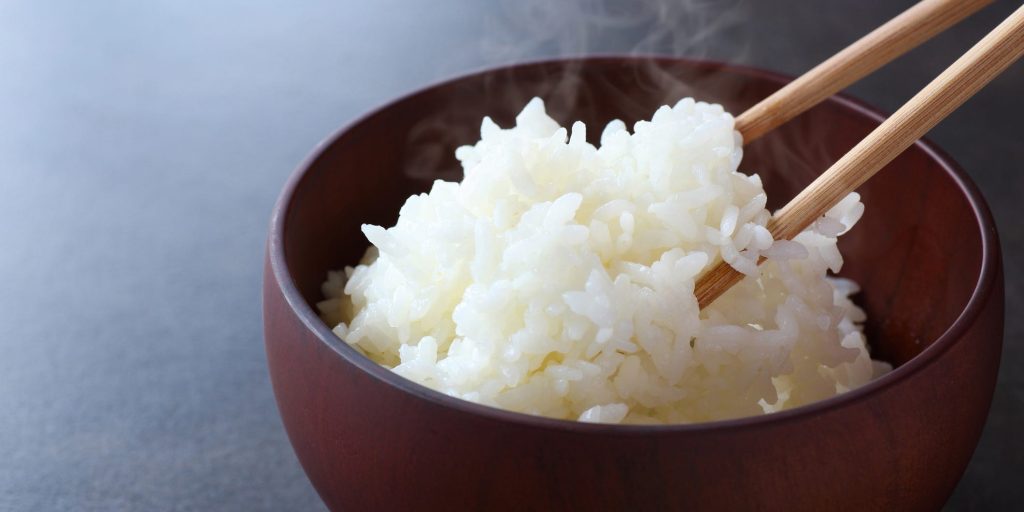
taa22/Getty Images
- Long-grain white rice is not as difficult to cook on the stove as it may seem.
- Be sure to rinse excess starch off the rice first and remember the 2:1 water to rice ratio.
- After your rice is boiled, let it steam and fluff it with a fork to ensure a lighter texture.
- Visit Insider's Home & Kitchen Reference library for more stories.
Cooking rice can be intimidating, and it may take several tries to get it right. But once you've perfected it, fluffy white rice is a versatile foundation for a global array of flavors. It's easy to cook white rice on the stove or microwave if you don't have a rice cooker.
Chef George Chen, founder of San Francisco's premier Chinese food emporium China Live shares his tips on how to consistently cook rice. Chen imports WuChang organic rice from the Heilongjiang area in China's northeast, favored by ancient royalty, as well as Champion rice from Taiwan, but his tips will work just as well with any long-grained rice variety.
Before you get started
- Choose your rice type: There are many different types of rice, ranging from short to long-grain, including Arborio, basmati, black rice, red rice, sticky rice, jasmine, and many more. Here, we focus on cooking basic long-grain white rice, including Texas long grain and jasmine, which are most commonly used in the United States.
- Rinse your rice: In Chinese culture, Chen says that three rinses is standard practice. He rinses three times so that the water is clean and clear. This removes excess starch from the outside of the grains helping to prevent gummy or sticky rice.
- Know the rice to water ratio: Lay your palm flat on top of the rice and the water should just barely cover the top of your hand. More generally, there should be about an inch of water over top of the rice. Chen says that shorter grain rice requires more water than long grain rice. The exact ratio depends on the rice type and cooking vessel. For long-grain white rice, aim for a 2:1 water to rice ratio.
- Portion properly: 1 cup of raw rice becomes 4 cups of cooked rice. Aim for 1 cup of raw rice for every two people, which will equate to two bowls each. Any leftover rice is perfect for making congee or fried rice the following day.
Troubleshooting tricky rice
Rice is stuck to the bottom of the pan: Rice can stick if the starch wasn't properly rinsed off before cooking, you used too little water, or your lid was not tight-fitting enough. If you find the rice is stubbornly stuck, close the lid tightly and let it continue to steam. Add a tiny bit more water if necessary. The steam will help loosen the rice.
Rice is gummy: Chen says this happens when you peek too often to check on the rice and let steam escape. Or if you don't add enough water to begin with. This can also happen if you don't wash your rice thoroughly.
The bottom is burnt: This can happen if you cook the rice too long on the stovetop, if the heat is too high or if you didn't add enough water. Burnt rice can be especially difficult to clean off a pot.
Rice is too wet: You added too much water, or you didn't cook it long enough.
Rice is clumpy: "Rice should not be clumpy unless you are throwing in old used rice with fresh uncooked rice," Chen says. Rice should cook evenly unless the heat is applied unevenly.
Insider's takeaway
Long-grain white rice is the most popular rice in the United States and it can be cooked on the stove or in the microwave if you don't have a rice cooker. Cooking rice on the stove takes more careful monitoring, while the microwave method is more prescriptive.
Depending on the type of rice used, the cooking vessel and the method used, you'll need to make slight adjustments in cooking time and ratio of water to rice. It may take a little trial and error, but after you've successfully cooked rice, use the same vessel to cook your rice each time for consistent results.
